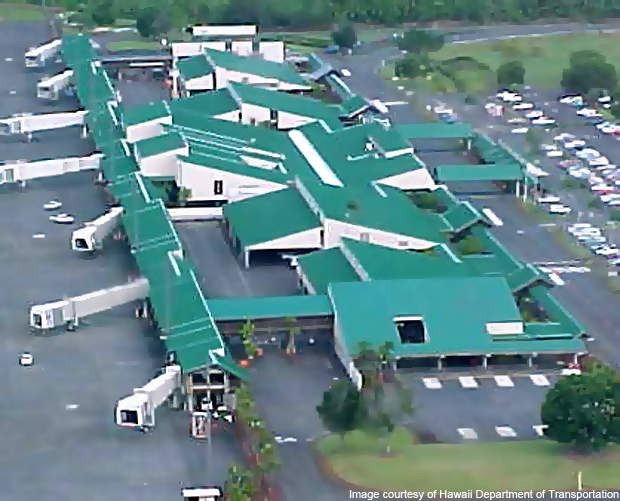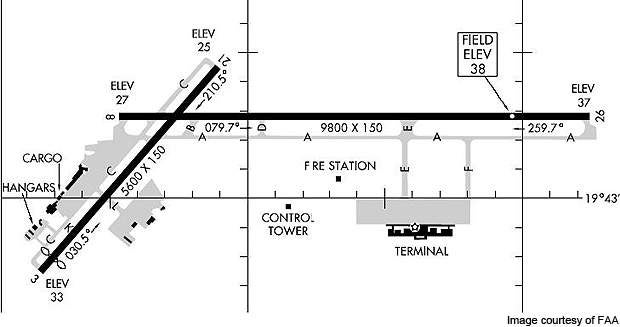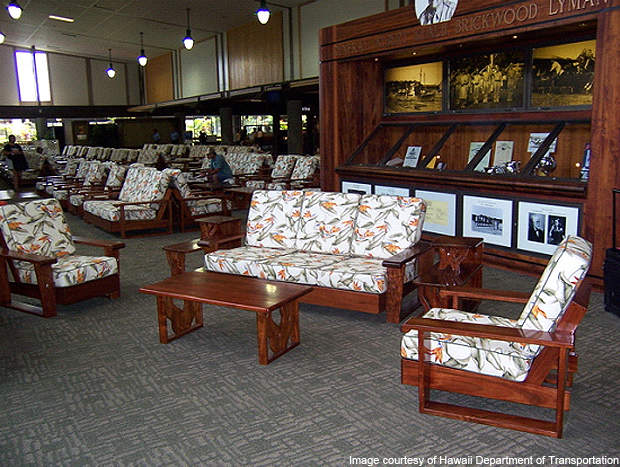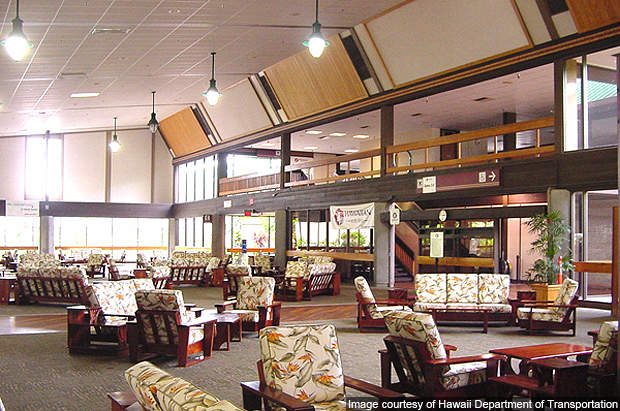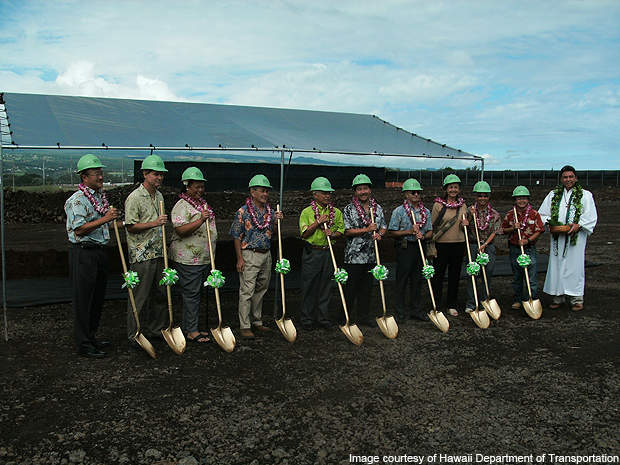The Hilo International Airport is owned and operated by the Hawaii State Department of Transportation (HDOT). It is spread over an area of 1,391 acres, serving the regions of East Hawaii, Hamakua and Kau, and the districts of Hilo and Puna.
The airport was initially known as General Lyman Field, named in the honour of General Lyman who was a brigadier general in the US Army. In 1989, the airport was renamed as Hilo International Airport.
The passenger traffic handled by the airport in 2008 was 1.3m. During the same year 75,598 aircraft movements were recorded at the airport.
Expansion
The airport underwent expansion works initially in 1920s. From 1927 to 1937 $34,000 was spent in developing the airport site. From 1937 to 1942 the Works Progress Administration spent $261,613 for upgrade works on the airport. In 1941, $314,000 was sanctioned by the Civil Aeronautics Administration for the airport expansion.
Construction of a new freight terminal building, aprons and parking areas was planned in 1952-53. The freight terminal was completed in June 1954. Construction of new taxiways and aprons was completed in 1967.
A long-term development programme began in 1970. Relocation of terminals and lengthening of the runway were carried out under the programme. Construction of a new terminal was started in July 1974. The work was divided into two phases. The first phase was completed in 1975 and the second in 1976.
A project to modernise the airports in Hawaii was announced in 2006. Named the Hawaii Airport Modernization Program, the project included plans to modernise the Hilo International Airport.
As part of the programme, the flight information display systems of the airport have been upgraded and a new airfield electrical vault was built to improve the airfield lighting and control system.
A new hold cargo and light industrial building is being built to consolidate all the cargo operations of the airport under one roof. The facility will include a 60,000ft² cargo building and 50,000 square-yard apron and taxiways. The $30m project broke ground in November 2009 and is scheduled for completion in November 2011.
The building is being constructed in two phases. The first phase includes the construction of an air carrier apron which will cost $15m. The second phase, which is also estimated to cost $15m, includes construction of the cargo building and parking lot. The federal government is funding $10m for the first phase. State airport funds have been sanctioned for the second phase.
Isemoto Contracting was awarded the contract for both phases. The existing cargo facility will be used as a heliport once the new cargo facility is opened.
An international arrivals corridor is expected to be completed by 2011. The corridor will have moving walkways. Other modernisation works in progress include replacement of passenger loading bridges, major electrical and air-conditioning systems and escalators at the international terminal.
The Hawaii Airport Modernization Program includes plans to build a separate parking facility for the airport employees, construction of new concourses, widening and resurfacing of taxiways and building a consolidated car rental facility in the coming decade.
Master plan
A master plan was formulated by the airport authority to meet increasing aviation demand in future. The master plan was framed based on a 20-year planning horizon by updating the plan every five or 10 years. The plan was divided into three phases.
Phase 1 was executed from 2000 to 2005 and cost $56.5m. It included airfield improvements, design of a new cargo facility and development of general aviation facilities.
A new helicopter air taxi area was also proposed. Various infrastructure facilities such as water, drainage, sewage, electrical and communications were planned for installation.
Phase 2 was started in 2006 and will be completed by 2010. The phase 2 works are expected to cost $19.7m.
The works under this phase will include demolition of the two old T-hangar buildings and construction of a T-hangar building at the north-west end.
An apron in the north-west area and the parking lot are to be expanded. Emergency access road from the aircraft rescue and fire fighting (ARFF) facility will be expanded.
Phase 3 has been planned to be executed during 2011-2020 and is expected to cost $24.1m. There are plans for relocation and expansion of runway 8/26. The other works will include expansion of taxiways and construction of blast pads at the ends of runway 3/21.
In addition, installation of MITL on taxiway F and taxiway C and installation of a precision approach path indicator (PAPI) on runway 3/21 were recommended. Further expansion of the parking lot was also recommended.
Terminals
The airport has two terminals known as the General Lyman terminal and the commuter terminal. General Lyman terminal is the main passenger terminal. It covers an area of 220,000ft² and has three interconnected buildings. The central building covers an area of 120,000ft² and each of the other two wings occupy an area of 50000ft².
The commuter terminal is a small building on the left side of airport and lies towards west of the main passenger terminal.
Air cargo operations at the airport are handled at the former passenger terminal which lies on the western edge of Runway 3/21.
The apron lies in front of the passenger terminal and has the capacity to accommodate ten heavier aircraft parking positions. The north-west apron provides parking for transient military aircraft.
Runways
The airport has two runways designated 8/26 and 3/21. The runway 8/26 is 2,987m-long and 46m-wide and is capable of handling large aircraft. The runway 3/21 is 1,707m-long and 46m-wide and is used for general aviation operations.
Air traffic control
A new air traffic control tower was opened in November 1979. The tower lies on the road leading into the airport. It is operated by Federal Aviation Administration.
Ground transport
There are numerous cars and taxis operating to and from the airport. There is a designated taxi lane for queuing located in front of the baggage claim area. Public transportation is not available at the airport.
Car rental
There are seven rental car companies at the airport. The car rental offices are situated on the ground level opposite to the terminal building.

